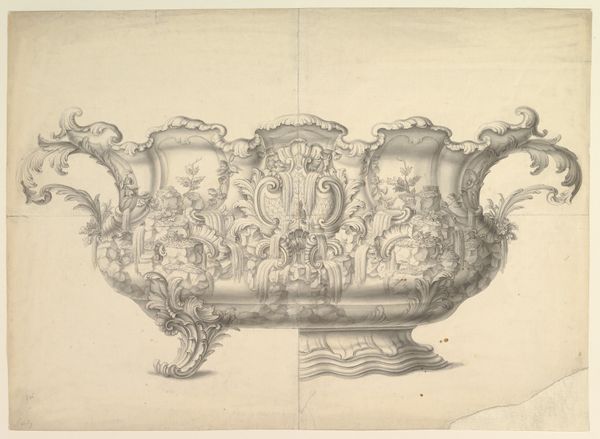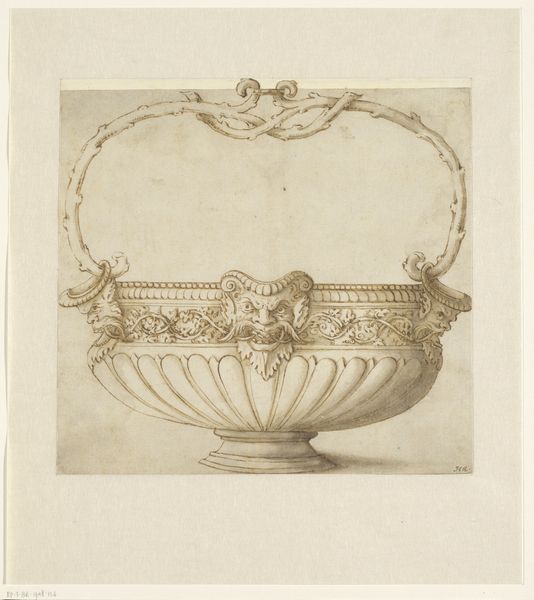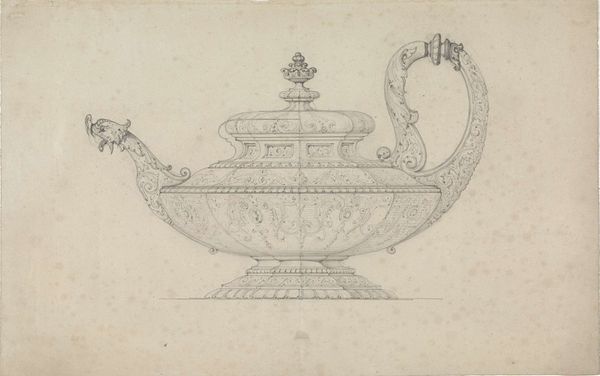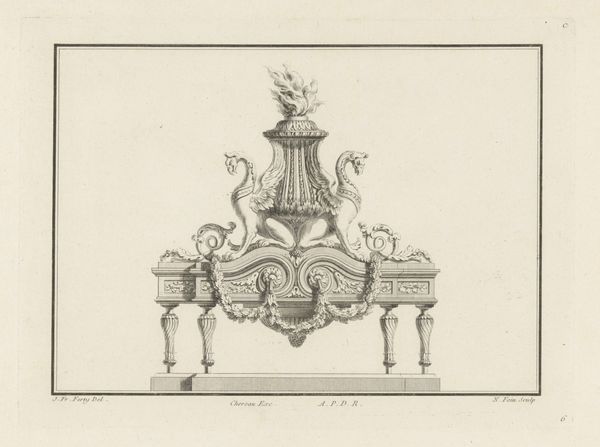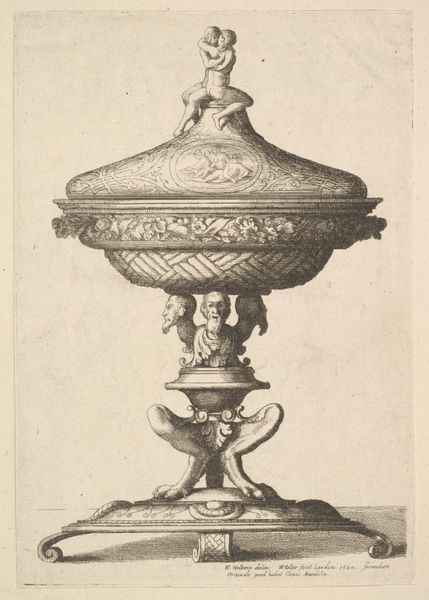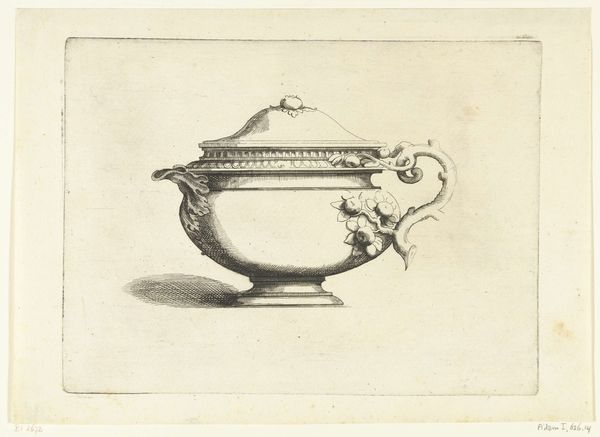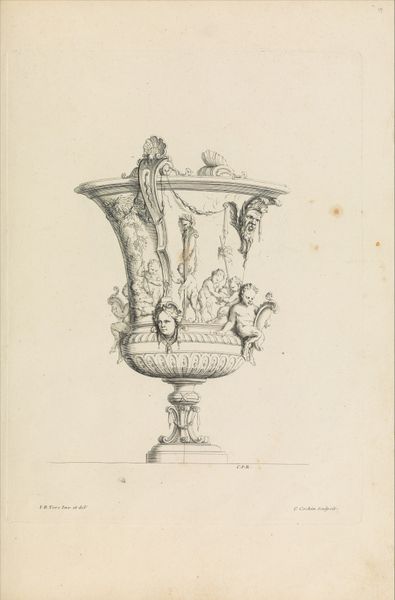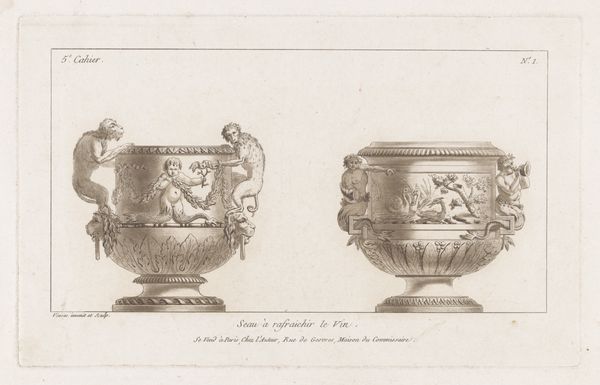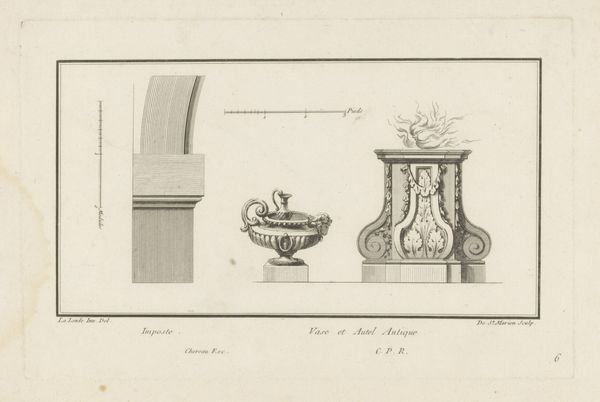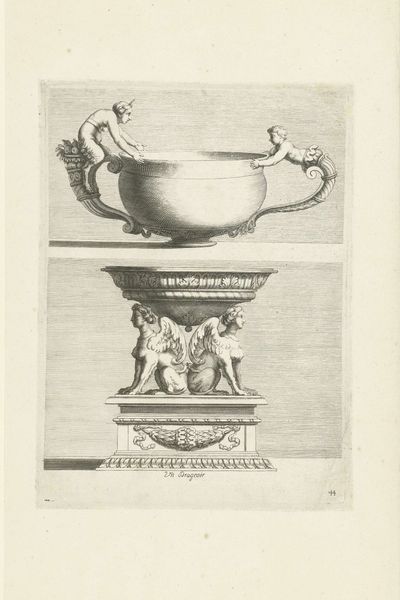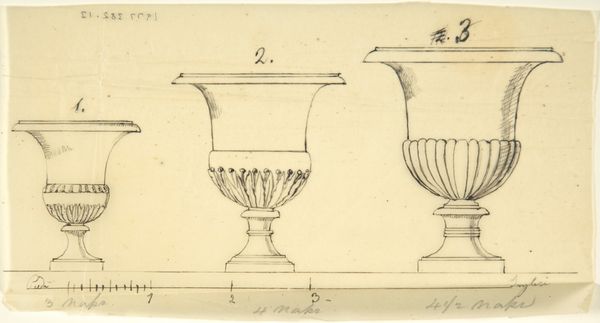
Covered Dish, Two Egg Cups, and Two Salt Cellars 1800 - 1900
0:00
0:00
drawing, print, pencil
#
drawing
#
neoclassicism
# print
#
pencil
#
academic-art
Dimensions: 8-1/2 x 17 in
Copyright: Public Domain
Editor: This is an intriguing drawing from between 1800 and 1900 called "Covered Dish, Two Egg Cups, and Two Salt Cellars," currently at the Metropolitan Museum of Art. The artist is anonymous, and it's rendered in pencil, with possible printmaking involved. The neat lines give it a precise, almost technical feel. What do you see when you look at this piece? Curator: What strikes me is how seemingly quotidian objects like egg cups are elevated to this level of careful artistic representation. These are not mere sketches; they’re imbued with neoclassical aesthetics and speak volumes about class and social rituals of dining. How might the presentation of even the most humble breakfast foods reinforce power dynamics? Editor: Power dynamics at breakfast? Curator: Precisely! Consider the material possibilities here. These are drawings, so potentially designs, for silverware. Silverware implied wealth. The Neoclassical style, with its nods to antiquity, also implied a cultivated, educated owner, someone who appreciated history and refined taste. Breakfast becomes a stage. Do you see how these aren't simply drawings of objects? Editor: So it’s more than just function, it’s about communicating something about yourself? Like, announcing your place in society? Curator: Exactly! And through the lens of gender, consider who these objects might have served or been used by. Who prepared the food, and who sat at the table? Were women expected to uphold these aesthetic standards? These are objects loaded with social significance beyond their surface appearance. What more can we infer? Editor: It’s fascinating to consider that something as simple as an egg cup could be so charged with meaning! Curator: Yes, and I appreciate your initial observation about the ‘technical’ feel. It reminds us that even designs for domestic objects can embody complex social codes and power structures.
Comments
No comments
Be the first to comment and join the conversation on the ultimate creative platform.
